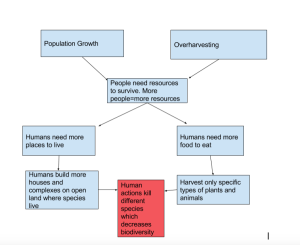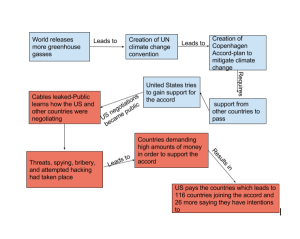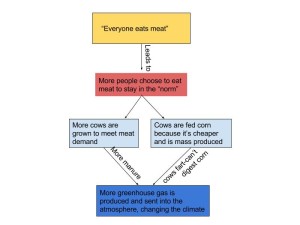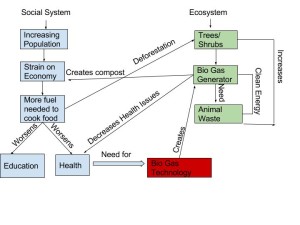Directions
1.Create a systems diagram showing how one of the HIPPO threats can be a danger to biodiversity. You may choose any one of the threats to focus your diagram on, or even combine two of the threats and show how they are related.
2. In a paragraph of 150-250 words describe the key ides behind your diagram.
3. In a paragraph of 150-250 words, describe what you could personally do to help lessen the affect of the threat that you created your diagram about. Ideas can consist of physical actions, ways to get people aware of this issue, or ideas of how to contact people in higher positions who can implement changes.
2.
My systems diagram shows how two threats of biodiversity: human population and overharvesting are connected and how they hurt the biodiversity of the Earth. The human population has been growing and continues to grow with every generation. When the population grows, we need more resources to sustain ourselves such as more places to live and more food to eat. Therefore, we build houses on open land that previously belonged to great numbers of different species and ecosystems and if they are not resilient enough, they will die out and become extinct. With more people humans also need more food to eat. However we do not look at all plants and animals as options to eat, only a small percentage of these things make it into the human diet. This is disastrous because if humans continuously eat a lot of the same animal or plant, then eventually we will kill them off, and have no replacement. In the end, the human population and use of overharvesting come together to show that both of these things are related and they are both hurting biodiversity all over the planet wherever humans are present.
3.
Unfortunately, when talking about the actions of the whole human population, there is not a lot that one person can do to change everyone’s actions right away. However that does not mean that we are powerless. I can not slow down the rate of growth that the human population as, but I can help to make sure that everyone is aware of the individual impact that they are having on biodiversity. I think the major problem is that most people do not think about this issue in their everyday lives even though it is very important. I want to start a biodiversity club or organization in my hometown in New Jersey that will help spread the word of this important issue. We would set up fundraisers and different events to hopefully make the whole town aware of biodiversity and how they affect it. I would also contact the town council and the higher government officials and make sure they have plans to protect areas of land in my town. I live very close to New York City so often times there are apartment complexes built in areas that used to be woods to fit more people in my town. I will make sure that this stops happening because it will help protect the biodiversity of my town, which I’m sure, has already lost so much due to the growing human population.




